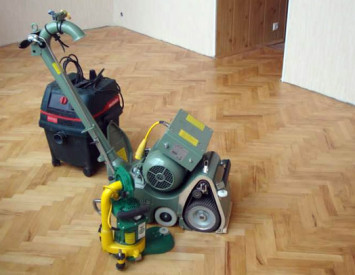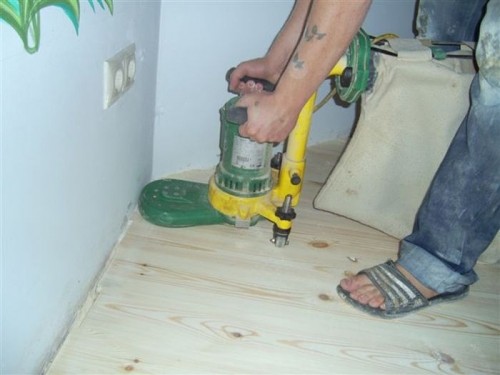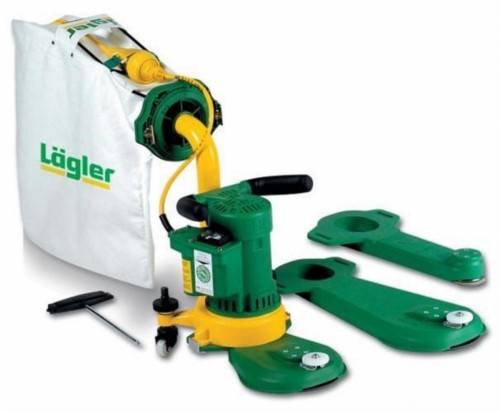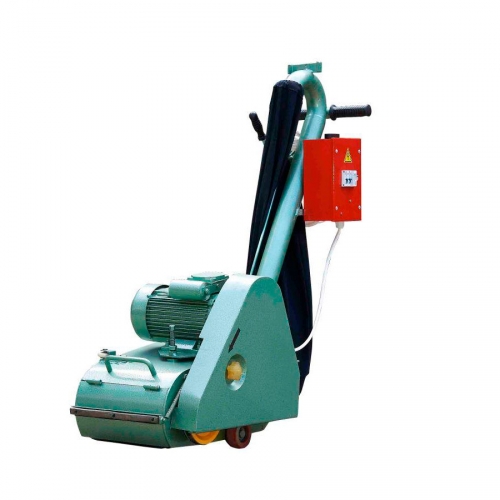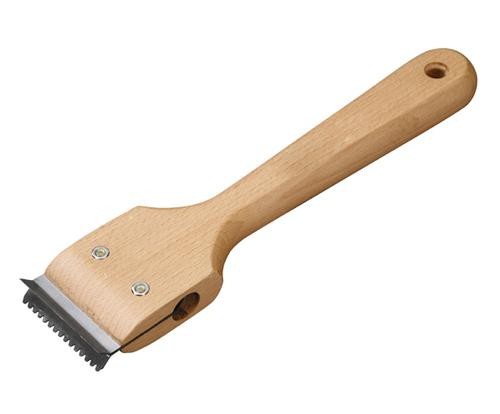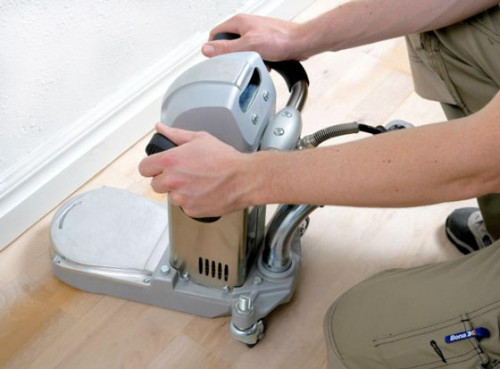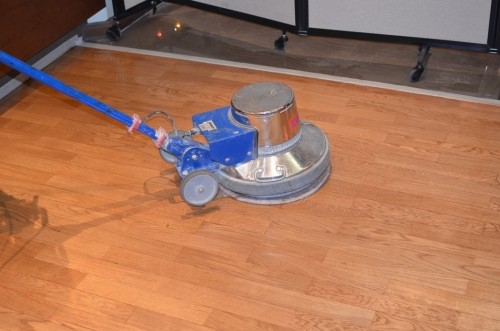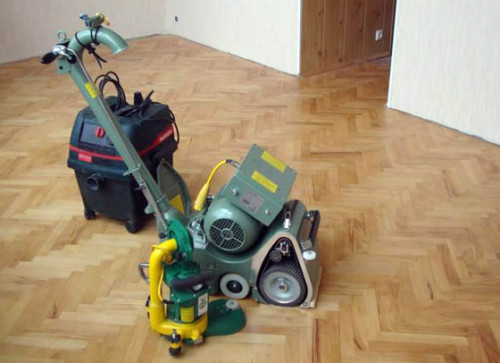One of the most common ways to repair or update the floor covering without removing is a cycle. In fact, this operation is nothing more than removing the surface layer of the coating, followed by a protective substance, usually varnish. Do -it -yourself cycles - the operation is quite time -consuming and it is very difficult to do this without a special tool. It is also worth noting that without special preparation there is a great risk of spoiling both the coating and tools. Therefore, before deciding to carry out these works with your own hands, it is necessary to weigh the pros and cons.
Content
The main points
In what cases is it inappropriate to carry out the cycle of the floor flooring? It is worth saying that this operation can not always be carried out. In some situations, it will not give anything, that is, it is absolutely useless, since the flooring is better to completely replace.
Consider the condition of the parquet in which the cyclist will not help return it to its original appearance. So, it makes no sense to carry out these works if:
- The flooring has potholes and irregularities, which are determined visually.
- The parquet coating was dry, the locks dispersed or, conversely, swollen.
- Parquet is rushing. This can be seen by person in places of large cross -country ability, especially in the doorways. If less than 5 mm remains from the surface of the parquet board to the Spunt, its cycle will not correct the position.
- In the room there was a blowing water or wet evaporation from the base of the floor. This problem can be immediately seen on the wallpaper that begins to exfoliate. The presence of evaporation from the main floor is checked as follows. Take a piece of polyethylene in size 1 m x 1 m, put on the floor and press the corners with any load. At normal temperature in the room (+18 ° C ...+27 ° C), there should be no condensation on the inner surface of the film. If it is, there is no point in cycle such a floor. It must be disrupted, view the condition of the main coating, make (replace) waterproofing, dry the room, and only then lay a parquet board.
- In the floor boards, a bug-dog was wound up. This problem is determined visually. On the affected coating during inspection, you can find small holes, next to which, as a rule, there are piles of fine chips.
- The parquet board is struck by rot. You can check the presence of rot in the parquet board using a simple shoe awl. In each of the corners of the room, 2-3 boards are checked. The awl is placed at an angle of 45⁰ in the corner of the board and pressed with a slight effort. It will enter the “healthy” board to a depth of 5-7 mm, depending on the wood breed. If the depth is larger, the board is affected by a rot from below. In this case, it will require its replacement.
Equipment and consumables for work
Conducting this type of work will require the presence of the following tools:
- Drum of grinding (machine for cycling parquet). This tool is necessary for the black (rough) removal of varnish and the upper layer of the parquet coating.
- Planning grinding machine. It is designed for finishing the flooring before varnishing.
- An angle grinding machine. Its presence is necessary when working in the corners, near the walls, in niches. Some "experts" recommend using a grinder instead of a budget instead of an angle grinding machine. Do not take these tips seriously. When processing the floor, there should be an emphasis, otherwise a rather heavy tool can break out of the hands and injure. Also, with such experiments, often a cable nozzle cup crashes into the floor surface, leaving deep potholes on it, which will later be problematic.
- Industrial vacuum cleaner. When carrying out these works, this thing is simply necessary. When cycling and finishing flooring, a large amount of fine dust is released, which must be completely removed before varnishing. It will be problematic to do a broom and a rag, so it is better to use a vacuum cleaner. Try to clean the chips immediately after work so that the places where the surface layer is not completely removed is clearly visible.
Keep in mind that the rental of such equipment can cost you 4-5 thousand rubles per day, therefore, if you are going to carry out these work with your own hand, plan all the operations in advance so as not to overpay for the time limit. Also, be prepared that the owner will ask you to leave a deposit of about 40-60 thousand rubles.
In addition to equipment, we will need supplies, namely:
- Three types of sandpaper: P36-R40 for black peel, P60-R80 for finishing grinding and P100-R120 for thin cleaning of the floor after primary varnishing. With a standard material width, its consumption will be approximately 1 m per 10 m 2 Paul.
- Disks for a flat -grinding machine - 3 pcs. 20 m 2 Paul.
- Parquet putty and parquet varnish, about 5 kg. 20 m 2 Paul.
All material will cost about 3 thousand rubles. Given these factors, calculate what will be profitable: do it yourself or hire professionals.
Safety precautions during an old parquet cycle
When carrying out the work on the cycle, the safety rules should be followed. Work must be done with glasses and respirator, as it is associated with a large ejection of dust. Despite the fact that in many cases, industrial vacuum cleaners are used when cycling, a large amount of dust still remains, which can have a harmful effect on the respiratory system and eyes. There are also cases of small pieces of wood, and so that they do not get into the eyes, it is better to use glasses.
Before starting work, be sure to convince your wiring. A simultaneous load on the power grid can reach 3 kW or 15 A. With weak wiring, soils and even fires are possible. Do not use a tool with visible signs of malfunctions and the absence of protective casings. Work only in workwear and special shoes.
Be sure to remove all the upholstered furniture and carpets from the room where you are going to carry out work. If the furniture cannot be removed for any reason, tightly wrap it with polyethylene and fasten it with tape. Windows must be open wide open, because the cycle of parquet without dust is almost impossible.
What you need to know before the work
Before starting work, it is important to know the basic principles of their implementation, otherwise you risk either breaking a car, or spoil the parquet. The main rule of working with the cycles is smooth and uniformity. It is not allowed to stop the tool in one place, otherwise it will leave potholes on the floor. Before the start of the cycle, it is necessary to raise the car, turn on and wait until the drum is gaining working turnover. Only then we lower it to the floor and begin to move. We stop working in the reverse order.
Remember, for the cycling machine, only a special skin must be used. It must be indicated by the arrow by the direction of rotation of the drum. It is necessary to refuel the skin only at the arrow. Often, during the operation of such a machine, eccentrics wear out that attach the tape, which is why the drive drum simply slips. In this case, it is necessary to use special substrates.
Each of the types of parquet has its own cycles and grinding technology:
- The parquet laid by the Christmas tree is cycle along the lines located at an angle of 45⁰ to the boards, and the final masonry is in the direction of masonry of the parquet. Since the latter are laid in different directions, each of the operations will have to do at least two entry.
- If the floor is decorated with a curly straight -layer parquet, it is necessary to cycle in two perpendicular directions, and always in two approaches.
- Patterned parquet coatings are cycling only by the masters of this business, since one careless movement can ruin the entire pattern. Typically, such coatings are lined from boards of valuable wood of wood in small thickness, so a careless cycling is guaranteed to ruin the pattern. The work is carried out in small areas, moving along the spiral outside. After processing one section, it is necessary to smoothly go to the next.
Grinding and cycling parquet
The order of work:
- To begin with, we take out all the furniture from the room, remove all the skirting boards. Then it is necessary to clean the floor with a broom and “walk” along it with a household vacuum cleaner to complete dust removal.
- Next, we install a rough P36-R40 skin in the peeling machine and start the work. First, we pass from the far wall to the most passable place. As the dust collector is filled, pour its contents into a plastic bag.
- If there are small spots of varnish (they can be visually determined by dark color), we tear them off using an angle grinding machine from the edge of the spot to the center. It remove the varnish from the surface in the corners and niches.
- We make a finish grinding using a flat -grinding machine, and the corners and niches are again passed by an angle grinding machine. After processing a certain area, we clean the dust.
- We make a putty mixture. Based on putty, we knead part of the dust that formed from grinding the surface, and put down the entire floor. If you do this only in areas where there are potholes and cracks, after varnishing they will be allocated with dark spots.
- After the putty dries, the coating must be sanded again. To do this, we use a cycling machine with a Skewa of P60-R80 and an angle grinding device for grinding hard-to-reach places.
- Next, apply a layer of varnish, and after drying it, we grind the p100-r120 skin. The remains of the pile are removed with a flat grinding machine.
- After grinding several times, we pass the floor and the walls with a vacuum cleaner to remove fine dust.
- We apply several layers of varnish. We apply each subsequent layer only after the previous one has completely dried. As a rule, the floor is covered with two layers of varnish, however, if the parquet is valuable or the room has high cross-country ability, it is better to make two to three layers more.
Features of the performance of work
Dicked up a boardwalk. These works are slightly different from the parquet cycles. Since such a floor is still not possible to align it, the use of a flat -grinding machine is inappropriate. In this case, it is necessary to remember one rule, the movement of the machine across the wood fibers is unacceptable.
Manual cycle parquet. Such an operation is carried out quite rarely and appropriate only for small rooms. For its production, a homemade or factory tool (scrub) is used.
Parquet cycles: photo
